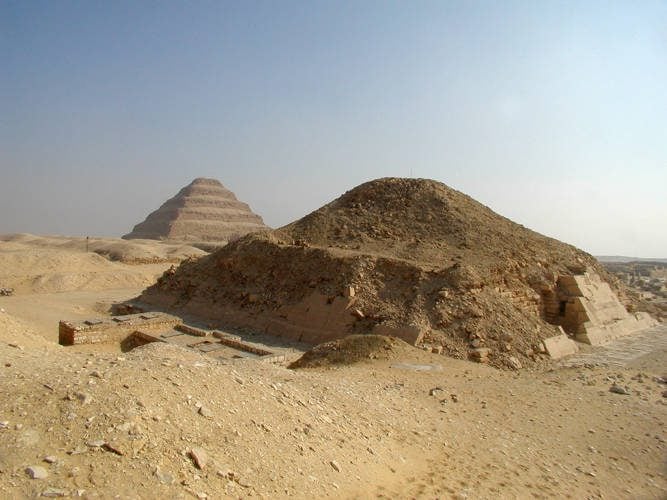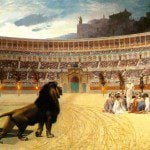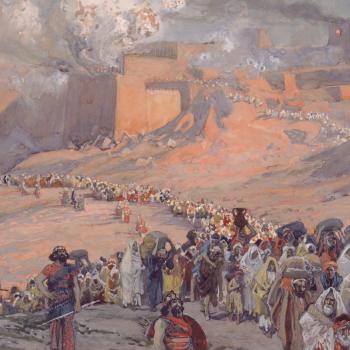
(Wikimedia Commons public domain image)
***
Today was the last day of our tour. (We have a supplemental trip to Alexandria tomorrow, but about one third or a half of our group will be heading for home shortly after midnight tonight.)
The ancient and medieval Egyptians didn’t locate their tombs and temples and mosques according to chronological sequence — very thoughtless of them! — so our visit today was dramatically out of order, historically. We visited one of the oldest surviving structures on Planet Earth.
We first headed south to Saqqara, where we entered the fifth-dynasty pyramid of Teti and the tomb of his vizier, Kagemni. The interior of the former is covered with the Pyramid Texts. The latter is decorated with scenes — some of them still colored and some of them rather humorous — of daily life. This, an idealized continuation of life on earth, was what the ancient Egyptians hoped for and fully expected in the life to come.
Thereafter, we traveled over to the entrance to the hebsed court that surrounds the famous step pyramid of King Djoser, which represents the first step toward the true pyramid as seen at Giza and elsewhere.
It is often said that Djoser’s pyramid, which was designed by the great physician and architect Imhotep, is the first stone building ever erected. I’m not sure that that’s true. There may be an older stone building, or more than one, on the Mediterranean island of Malta. But not remotely on the scale of King Djoser’s tomb.
By the way, it’s an injustice of perfectly colossal dimensions that, of all the names that could have been chosen for Boris Karloff’s evil Mummy and Brandon Fraser’s more recent one, the name that was selected is Imhotep. The historical Imhotep was eventually deified by the Egyptians for his benefactions to humankind. Even the Greeks eventually conflated him with their god of medicine, Aesculapius, the son of Apollo.
As I conclude this short blog entry, I’m sitting in the lobby of the Grand Nile Tower listening to a male and female singing duo. They’ve mostly been singing Arabic songs. Interspersed among them, though, was the Carpenters’ “Close to You” and a really quite good rendition of “White Christmas.”
Posted from Cairo, Egypt












